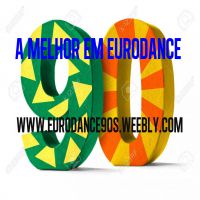Eurodance emerged in the late 1980s and early 1990s as a vibrant fusion of electronic dance music styles, primarily from Europe. This genre is characterized by its high-energy beats, catchy melodies, and often repetitive lyrics, making it a staple of European nightclubs and radio stations during its heyday. The sound typically features a four-on-the-floor beat, synthesized basslines, and prominent use of drum machines and sequencers.
One of the defining features of Eurodance is its reliance on male rappers or spoken-word performers who deliver energetic verses over the electronic backdrop, while female vocalists provide melodic hooks. This dual-vocalist approach became a signature element, with groups like Snap! ("The Power"), 2 Unlimited ("No Limit"), and Haddaway ("What Is Love?") exemplifying this style. The lyrics often revolve around themes of love, partying, and empowerment, contributing to the genre's upbeat and celebratory atmosphere.
Eurodance drew influences from various musical styles, including house music, techno, hip-hop, and pop. Producers like Benny Benassi, DJ Sammy, and Cascada incorporated elements from these genres, creating a unique sound that resonated with audiences across Europe and beyond. The genre's popularity was bolstered by the rise of music television channels like MTV Europe, which provided a platform for Eurodance artists to reach a wider audience.
The production techniques in Eurodance often involved layered synthesizers, drum loops, and extensive use of reverb and delay effects to create a rich, immersive soundscape. The melodies were typically simple yet infectious, designed to be easily remembered and sung along to. This accessibility was a key factor in the genre's widespread appeal.
Eurodance also had a significant impact on fashion and culture. Artists often adopted flamboyant outfits and hairstyles, contributing to the genre's visual identity. The music videos accompanying Eurodance tracks were known for their vibrant colors, energetic choreography, and futuristic themes, further enhancing the genre's allure.
Despite its peak in popularity during the 1990s, Eurodance continued to influence various sub-genres and related styles, such as happy hardcore, trance, and commercial dance music. Artists like Aqua ("Barbie Girl"), Vengaboys ("We Like to Party!"), and DJ Bobo ("Chihuahua") carried the torch into the early 2000s, ensuring that Eurodance remained a recognizable and beloved genre.
In recent years, there has been a resurgence of interest in Eurodance, with many artists paying homage to the style through remixes, cover versions, and new releases. The enduring appeal of Eurodance lies in its ability to evoke nostalgia while maintaining a timeless quality that resonates with listeners of all ages. Whether it's the infectious beats, catchy melodies, or iconic vocals, Eurodance continues to be celebrated as a pivotal chapter in the history of electronic music.
 1.5k
1.5k
 3
Brazil, Rio de Janeiro Eurodance 128 kbps MP3
3
Brazil, Rio de Janeiro Eurodance 128 kbps MP3 1.1k
Eurodance
1.1k
Eurodance 99
99
 1
Germany, Berlin Eurodance
1
Germany, Berlin Eurodance

